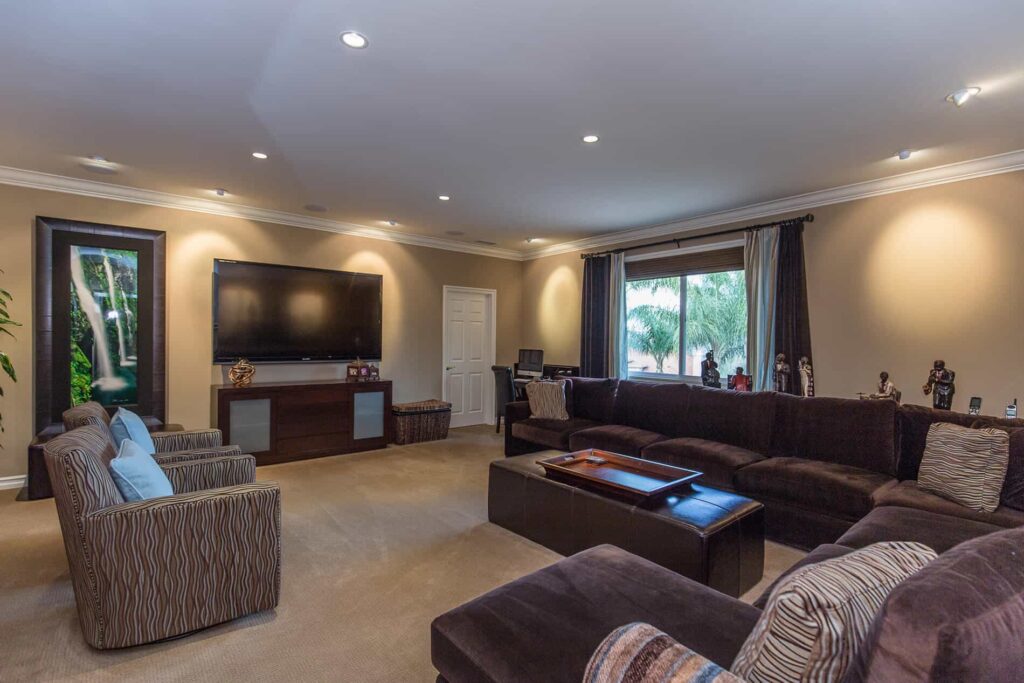Home » Treatment for Teens » Depression
Adolescent Bipolar Disorder Treatment
Our adolescent bipolar disorder treatment center will help your teen overcome bipolar disorder.
Contact Hillcrest Adolescent Treatment Center today to learn more.
Home » Treatment for Teens » Depression
Adolescent Bipolar Disorder Treatment
Our adolescent bipolar disorder treatment center will help your teen overcome bipolar disorder.
Contact Hillcrest Adolescent Treatment Center today to learn more.

At Hillcrest Adolescent Treatment Center, we know how difficult it can be to watch your child struggle with the challenges of bipolar disorder. Our mission is to provide a safe, structured, and nurturing environment where teens ages 12–18 can receive expert care tailored to their unique needs. Using evidence-based approaches and fostering family involvement, we help adolescents and their families regain stability and hope.
If you’re searching for trusted care for your teen, Hillcrest is here to help every step of the way.
Contact us today to learn more about our teen mental health treatment centers.
What Is Adolescent Bipolar Disorder?
Adolescent bipolar disorder is a mental health condition marked by extreme mood swings that range from emotional highs (mania or hypomania) to intense lows (depression). These episodes can disrupt a teen’s ability to function, impacting their school performance, relationships, and home life.
For teens, bipolar disorder can feel like an emotional rollercoaster, making it hard to maintain stability or cope with stress. Early diagnosis and comprehensive treatment are critical to helping adolescents learn how to manage their condition and develop the tools they need to thrive.
Types of Bipolar Disorder
Bipolar disorder is not a one-size-fits-all diagnosis. It manifests in several forms, each requiring unique treatment approaches:
- Bipolar I Disorder: Characterized by severe manic episodes lasting at least seven days or requiring hospitalization, often followed by depressive episodes.
- Bipolar II Disorder: Defined by a pattern of depressive episodes and less severe hypomanic episodes.
- Cyclothymic Disorder: Includes periods of hypomanic and depressive symptoms that persist for at least one year but don’t meet the full diagnostic criteria for bipolar I or II.
- Unspecified Bipolar Disorder: Covers cases that don’t fit neatly into other categories but still cause significant distress or impairment.
At Hillcrest, our clinical team conducts thorough assessments to accurately diagnose the type of bipolar disorder your teen is experiencing, ensuring they receive the most effective care.
Signs of Teen Bipolar Disorder
Recognizing the signs of bipolar disorder in adolescents can be challenging, as symptoms often overlap with typical teenage behavior. If these symptoms interfere with your teen’s daily life or seem extreme for their age, seeking professional help can make a life-changing difference.
Manic Symptoms
- Elevated or irritable mood
- Increased energy or activity levels
- Impulsive, risky behaviors
- Decreased need for sleep
- Racing thoughts or rapid speech
Depressive Symptoms
- Persistent sadness or hopelessness
- Loss of interest in activities
- Fatigue or low energy
- Difficulty concentrating
- Thoughts of self-harm or suicide
Do You Think Your Teen Is Struggling With Bipolar Disorder?
The Teen Bipolar Quiz for Parents is designed to help concerned parents identify potential signs of bipolar disorder in their adolescent. This brief assessment guides you through common behavioral patterns and mood changes that might indicate bipolar disorder, distinguishing between typical teenage mood swings and more concerning symptoms.
Signs of Teen Bipolar Disorder
Recognizing the signs of bipolar disorder in adolescents can be challenging, as symptoms often overlap with typical teenage behavior. If these symptoms interfere with your teen’s daily life or seem extreme for their age, seeking professional help can make a life-changing difference.
Manic Symptoms
- Elevated or irritable mood
- Increased energy or activity levels
- Impulsive, risky behaviors
- Decreased need for sleep
- Racing thoughts or rapid speech
Depressive Symptoms
- Persistent sadness or hopelessness
- Loss of interest in activities
- Fatigue or low energy
- Difficulty concentrating
- Thoughts of self-harm or suicide

Adolescent Bipolar Statistics
Bipolar disorder is a serious mental health condition that affects a significant number of adolescents. Understanding the prevalence and impact of the disorder can provide important context for families, helping them realize they are not alone in seeking help for their child.
Prevalence
According to the National Institute of Mental Health (NIMH), approximately 2.9% of adolescents in the U.S. are diagnosed with bipolar disorder each year, with severe impairment reported in 2.6% of cases. This highlights the substantial number of teens who struggle with the disruptive effects of the disorder.
Age of Onset
Research shows that up to 60% of adults with bipolar disorder report their first symptoms appearing during adolescence, often between the ages of 15 and 19. Early identification and treatment are crucial, as untreated bipolar disorder can lead to increased difficulties in adulthood, including substance use disorders, poor academic performance, and strained relationships.
Suicide Risk
Adolescents with bipolar disorder face an increased risk of suicidal thoughts and behaviors. The NIMH reports that between 20-60% of individuals with bipolar disorder will attempt suicide at least once in their lifetime. Among teens, this underscores the importance of vigilant care and early intervention to mitigate these risks.
Early Intervention
Early diagnosis and treatment can significantly improve outcomes for adolescents with bipolar disorder. Studies show that teens who receive proper treatment are more likely to achieve mood stability, maintain healthy relationships, and succeed academically. A report from the American Academy of Child and Adolescent Psychiatry indicates that with appropriate care, 70-80% of adolescents with bipolar disorder experience meaningful improvements in their symptoms.
Hillcrest Adolescent Treatment Center is committed to providing the specialized care and evidence-based therapies that help adolescents manage bipolar disorder, offering them and their families hope for a brighter future.
Adolescent Bipolar Statistics
Bipolar disorder is a serious mental health condition that affects a significant number of adolescents. Understanding the prevalence and impact of the disorder can provide important context for families, helping them realize they are not alone in seeking help for their child.
Prevalence
According to the National Institute of Mental Health (NIMH), approximately 2.9% of adolescents in the U.S. are diagnosed with bipolar disorder each year, with severe impairment reported in 2.6% of cases. This highlights the substantial number of teens who struggle with the disruptive effects of the disorder.
Age of Onset
Research shows that up to 60% of adults with bipolar disorder report their first symptoms appearing during adolescence, often between the ages of 15 and 19. Early identification and treatment are crucial, as untreated bipolar disorder can lead to increased difficulties in adulthood, including substance use disorders, poor academic performance, and strained relationships.
Suicide Risk
Adolescents with bipolar disorder face an increased risk of suicidal thoughts and behaviors. The NIMH reports that between 20-60% of individuals with bipolar disorder will attempt suicide at least once in their lifetime. Among teens, this underscores the importance of vigilant care and early intervention to mitigate these risks.
Early Intervention
Early diagnosis and treatment can significantly improve outcomes for adolescents with bipolar disorder. Studies show that teens who receive proper treatment are more likely to achieve mood stability, maintain healthy relationships, and succeed academically. A report from the American Academy of Child and Adolescent Psychiatry indicates that with appropriate care, 70-80% of adolescents with bipolar disorder experience meaningful improvements in their symptoms.
Hillcrest Adolescent Treatment Center is committed to providing the specialized care and evidence-based therapies that help adolescents manage bipolar disorder, offering them and their families hope for a brighter future.

Benefits of Teen Bipolar Disorder Treatment
Receiving professional treatment for bipolar disorder can transform your teen’s life in profound ways. At Hillcrest, we celebrate every step forward, big or small, on the path to wellness.
Emotional Stability
One of the primary goals of treatment is to help teens achieve emotional stability. Bipolar disorder often causes extreme mood swings that leave teens feeling out of control and overwhelmed. Through evidence-based therapies like cognitive-behavioral therapy (CBT) and dialectical behavior therapy (DBT), treatment reduces the intensity and frequency of these mood episodes. Teens learn strategies to identify triggers, manage stress, and regulate their emotions effectively.
For many adolescents, this newfound stability translates into improved self-confidence and a greater sense of control over their lives. As they gain these tools, teens are better equipped to handle the challenges of school, friendships, and daily responsibilities.
Improved Relationships
Bipolar disorder can place significant strain on relationships, especially within the family. Episodes of irritability, impulsive behavior, or withdrawal can make it difficult for parents and siblings to understand or connect with their teen.
At Hillcrest, we emphasize family therapy as a cornerstone of treatment. These sessions are designed to:
- Improve communication by fostering empathy and understanding.
- Resolve conflicts in a constructive and supportive environment.
- Equip families with strategies to support their teen during challenging times.
By healing strained relationships and strengthening family bonds, treatment helps create a more harmonious and supportive home environment. This not only benefits the teen but also brings peace and clarity to the entire family.
Academic and Social Success
Bipolar disorder often disrupts a teen’s ability to focus and succeed in academic and social settings. Manic episodes may lead to impulsive behavior or difficulty concentrating, while depressive episodes can sap motivation and energy.
Professional treatment provides teens with the tools they need to navigate these challenges. Therapies focused on time management, organization, and stress reduction help them regain control of their academic performance. Many teens who receive treatment find that their grades improve, and they’re better able to set and achieve educational goals.
Socially, treatment supports teens in rebuilding or forming friendships by teaching skills like conflict resolution, active listening, and self-awareness. Group therapy at Hillcrest also provides a safe space where teens can connect with peers who understand their struggles, fostering a sense of belonging and community.
Adolescent Bipolar Disorder Treatment Options
At Hillcrest, each teen’s treatment plan is personalized to their unique needs, ensuring a holistic approach to recovery. We offer a comprehensive range of evidence-based treatment options, including:
- Individual Therapy: Teens work one-on-one with a therapist to explore their thoughts, emotions, and behaviors in a safe, supportive space.
- Family Therapy: Family therapy sessions strengthen family communication and provide tools for navigating the challenges of bipolar disorder together.
- Group Therapy: Teens connect with peers who face similar struggles, fostering a sense of community and shared understanding.
- Medication Management: Our psychiatric team carefully monitors and adjusts medications to ensure they’re effective and well-tolerated.
- Holistic Interventions: Activities like mindfulness, yoga, and art therapy complement traditional treatments and support overall well-being.
When to Seek Help for My Teen
If your teen’s mood swings, behavior changes, or emotional struggles disrupt their daily life, it may be time to seek professional help. This is especially important if your teen exhibits self-harming behaviors or has expressed thoughts of suicide.
Early intervention not only prevents symptoms from worsening but also provides your teen and your family with the support needed to navigate the journey toward healing.
Our Clinical Model
Hillcrest’s integrated clinical model focuses on providing individualized care in a safe and nurturing environment. From the moment your family arrives, our team is dedicated to ensuring that your teen feels supported and understood.
- Comprehensive Assessment: We perform thorough evaluations to create tailored treatment plans.
- Family-Centered Approach: Healing the family unit is central to our philosophy. We provide education and tools to strengthen family bonds.
- Evidence-Based Practices: From cognitive-behavioral therapy (CBT) to dialectical behavior therapy (DBT), we use proven methods to guide treatment.
- Secure Environment: Our campus is designed to provide a structured, calming space where teens can focus on their recovery.
Find Teen Bipolar Disorder Treatment in Los Angeles Today
Your teen’s future is full of potential, and Hillcrest is here to help them unlock it.
Let us answer your questions and guide you through the process of finding the best care for your child. Call Hillcrest Adolescent Treatment Center or fill out our online form to speak with a compassionate admissions specialist.
At Hillcrest, your family is never alone on this journey. Together, we can make a difference.












